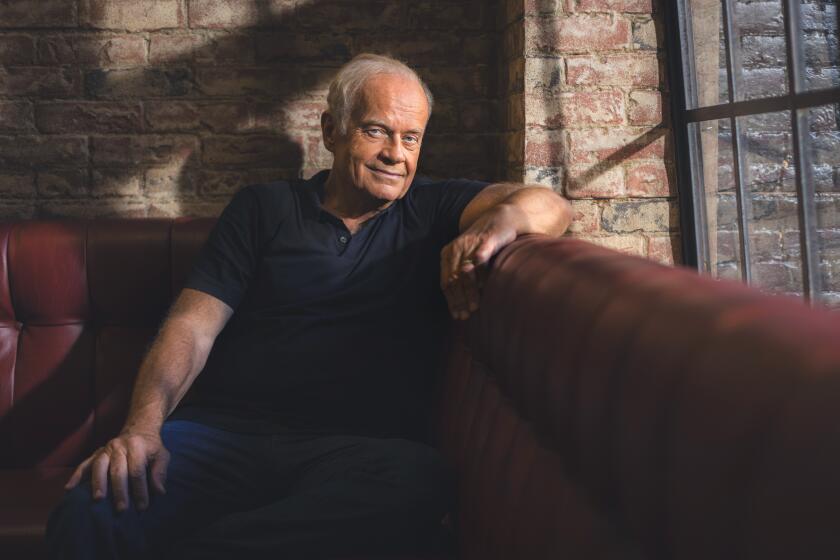TOURING THE ELECTRONIC LABYRINTH
If the most recent Consumer Electronics Show here is any indication, evolution, not revolution, has become the watchword in entertainment technology.
The four-day winter show, which ended Sunday, offered enough new merchandise to fill the Las Vegas Convention Center and spill over to nearby hotels. There was enough hands-on gadgetry to keep most retailers and distributors satisfied.
Much of what was on display--prototypes of digital audio tape (DAT) recorders, a 4mm video camera and a double-deck VCR--had already been announced, sampled or talked about. Though none of the gadgets seemed revolutionary in the way that 8mm video and compact discs did at previous shows, this was the best place to get a sense of where things are going in video, audio and related electronics.
Some of the events and equipment that stood out in the electronic labyrinth:
DIGITAL: Digital continued its dominating presence, with the spotlight on Digital Audio Tape (DAT) and digital VCRs. But this consumer show provided a rare chance to actually hear DAT. But not at every booth. Hitachi showed a model that you could look at but not hear; at the last moment, the company decided to comply with the no-demo requests of a Japanese electronics organization. However, Sony proudly paraded its DAT gear--and the sound was as impressive as rumored, absolutely comparable to compact discs. Kenwood even showed off a DAT player for the car.
Among the features of digital VCRs (depending on the brand) are jitter-free special effects; picture-in-picture (enabling you to watch two channels or a channel and a tape at once); some video-processing tricks (such as “solarizing” or “tiling” the picture into strange shapes and colors); and freezing an image being telecast. Also available: some reduction of video “noise” on an NEC model, enhanced resolution on a new Toshiba deck, and the incorporation of improved digital audio (PCM) and four-pictures-in-one on another upcoming Toshiba VCR.
DOUBLE DECKS: Copying tapes by hooking two VCRs together, if you have to rent or borrow a second machine, is a hassle. And if you’re copying a rented movie, it’s illegal. A controversial machine unveiled by Go-Video--a Scottsdale, Ariz., company--will radically simplify all that. The VCR-2 has two VHS wells in the same unit. According to Richard Lang, Go-Video’s chief executive officer, you lose only 5% resolution on the copy.
The Dual Deck on exhibit was just a bare-bones prototype. The machine, Lang said, might sell for $500-$600 and would ultimately be much smaller than the bulky model on view. The VCR-2, which also has editing features, is not yet in production. In fact, Go-Video execs were in the market for a manufacturer for the design; Lang met with several company representatives at the show and claimed some were very interested. The Motion Picture Assn. of America, which strongly opposes copying, undoubtedly will try to keep this machine off the market, as it has with proposed Korean double decks. Lang stressed the machine’s editing features and played down the copying function.
The VCR-2 has another attractive feature: It can play a prerecorded tape while simultaneously recording a TV show.
FORWARD TO 4MM? The most innovative development outside DAT may be Samsung’s 4mm camcorder, which the Korean company hopes to be selling Stateside around November. The demonstration of tapes made with the new model, shown alongside 8mm and VHS tapes, was pretty convincing. And the Samsung camcorder will even receive TV signals like a home deck!
Still, there were a lot of unanswered questions about this fresh entry. It uses DAT, and therefore its U.S. introduction depends on the availability of that tape. It looks like the camcorder will weigh in at about 2.5 pounds and retail at about $1,300--no appreciable advantage over the lightest, cheapest 8mm and VHS-C models (with several of each on display).
THE BIG PICTURE: Also on exhibit were new stereo-decoding receiver/monitor televisions, (big U.S. sales expected this year), with the emphasis on giant, direct-view (non-projection) screens. Sharp and Toshiba displayed 30-inch models, while Sanyo showed off its 35-incher.
But the excitement over the big cathode-ray tubes (CRT) came a few months ago when Mitsubishi (the developer of the 35-inch CRT) and Sharp put the first 35-inch monitors into shops.
But if the Consumer Electronics Show here didn’t overwhelm visitors with impressive developments, that doesn’t mean the booming field is running out of ideas. It’s probably just catching its breath after an incredible decade of progress and success.
More to Read
More to Read
More to Read
The biggest entertainment stories
Get our big stories about Hollywood, film, television, music, arts, culture and more right in your inbox as soon as they publish.
You may occasionally receive promotional content from the Los Angeles Times.






